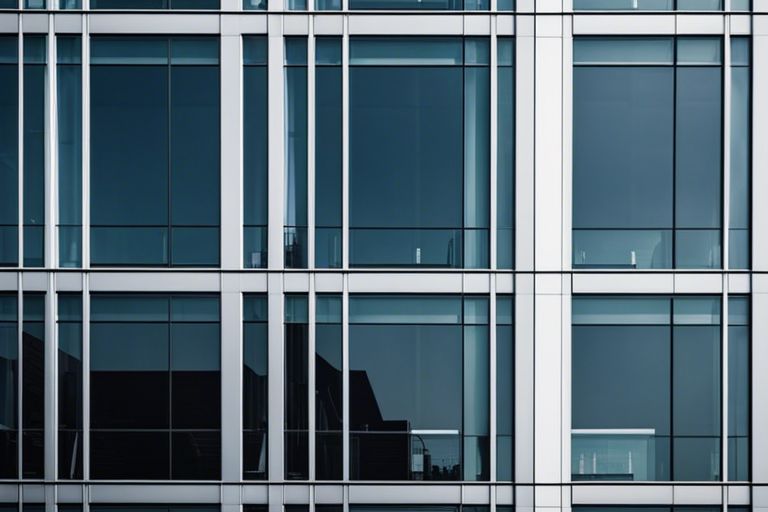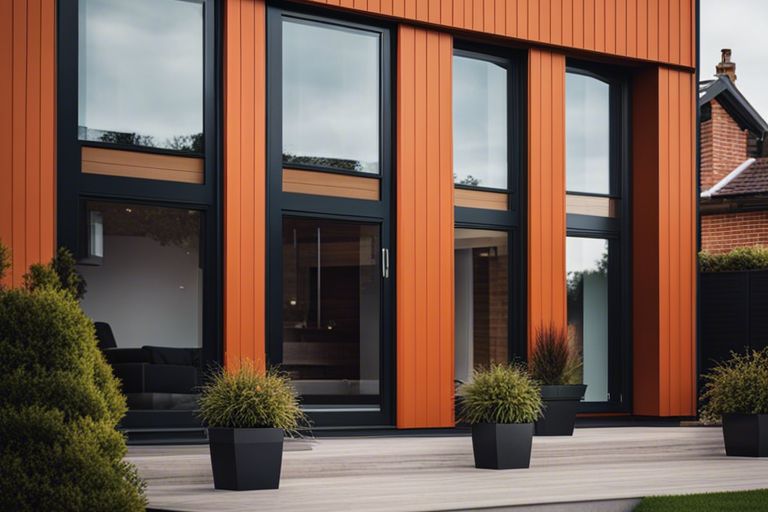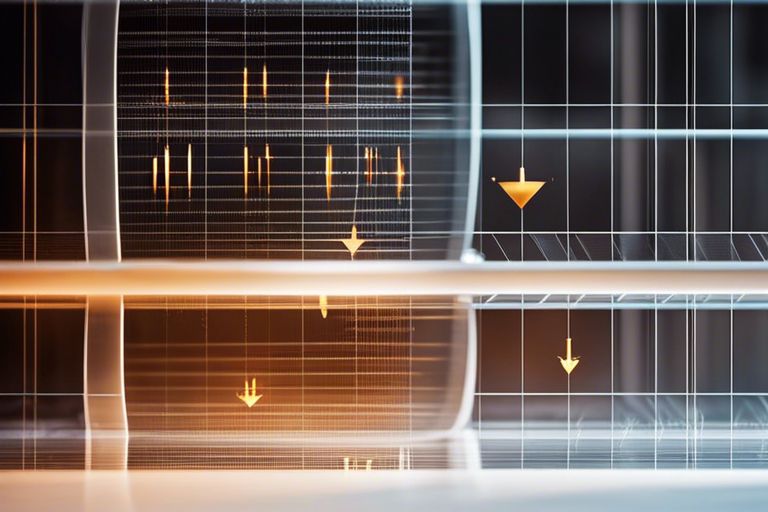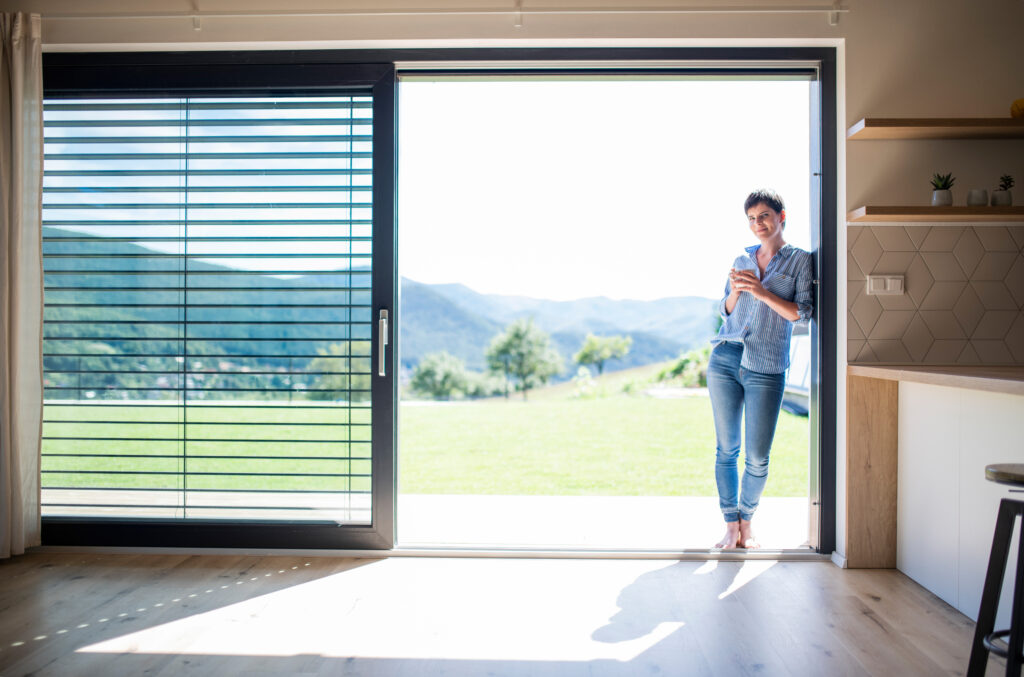When it comes to modern architectural design, curtain wall cladding plays a crucial role in both enhancing the aesthetic appeal of a building and providing essential functions. This innovative exterior wall system not only offers a sleek and contemporary look but also provides thermal insulation, weather protection, and soundproofing benefits. Understanding the importance of choosing the right materials, installation techniques, and maintenance is vital for ensuring the long-term durability and performance of curtain wall cladding systems. Join us as we probe into the aesthetic and functional aspects of curtain wall cladding to explore how this architectural element can transform buildings into modern marvels.
Key Takeaways:
- Curtain wall cladding enhances the overall aesthetic appeal of the building, giving it a modern and sleek look.
- Functionally, curtain wall cladding provides protection from the elements, offers thermal insulation, and improves energy efficiency.
- Choosing the right material and design for curtain wall cladding is crucial to ensure durability, sustainability, and performance over time.

Historical Development of Curtain Wall Systems
Evolution from Past to Present
Curtain walls have a rich history that can be traced back to the early 19th century. The concept of using non-structural outer walls to cover a building’s facade originated in Europe and gained popularity during the modernist movement of the early 20th century. Initially made from steel and glass, curtain walls were designed to create a seamless, sleek appearance while allowing natural light to flood the interior spaces. Over time, advancements in materials and construction techniques have revolutionised the design and functionality of curtain wall systems.
From the basic single-glazed panels of the past, modern curtain walls now feature double or triple glazing, thermally broken frames, and innovative cladding materials. These advancements have drastically improved the energy efficiency and performance of buildings, leading to a significant reduction in heating and cooling costs. The evolution of curtain wall systems from simple glass boxes to sophisticated, high-performance facades showcases a blend of aesthetic appeal and technological innovation.
Technological Advancements Impacting Design
Technological advancements have played a crucial role in shaping the design and performance of curtain wall systems. From CAD software for precise design to Building Information Modelling (BIM) for integrated project delivery, digital tools have streamlined the design process and enhanced collaboration between architects, engineers, and contractors. Additionally, the development of sustainable materials, such as photovoltaic glazing and insulated metal panels, has enabled designers to create environmentally friendly and visually striking facades.
The integration of smart technologies, such as dynamic shading systems and intelligent glass, has further improved the comfort and functionality of buildings. These features adapt to environmental conditions, reducing glare and heat gain while maximising natural light. The continuous research and development in materials and technologies continue to push the boundaries of curtain wall design, offering architects and designers endless possibilities for creating iconic and sustainable buildings.
Aesthetic Considerations in Curtain Wall Cladding
Design and Visual Impact
When it comes to curtain wall cladding, the design plays a crucial role in determining the overall visual impact of a building. The arrangement of panels, the use of glass, and the framing system all contribute to the aesthetic appeal. Architects and designers need to carefully consider the proportions, symmetry, and detailing to create a visually striking facade that enhances the overall architectural design.
Attention to detail is key in achieving a harmonious and visually appealing curtain wall cladding. The choice of materials, finishes, and textures can also greatly influence the design outcome. By carefully selecting and combining different elements, a unique and attractive facade can be created that not only enhances the building’s appearance but also makes a statement.
Material Selection and Color Schemes
Material selection is a critical aspect of curtain wall cladding as it not only affects the aesthetics but also the performance and longevity of the facade. The choice of materials such as glass, metal, stone, or composite panels can determine the overall look and feel of the building. Additionally, colour schemes play a significant role in creating a cohesive design that complements the surrounding environment.
When considering material selection and colour schemes, it is important to balance practicality with aesthetics. Durable materials that require minimal maintenance are ideal for long-term performance, while bold colour choices can add a touch of modernity and vibrancy to the building facade. By carefully evaluating the impact of materials and colours, architects can create visually stunning curtain wall claddings that stand the test of time.

Functional Attributes of Curtain Wall Systems
Thermal Performance and Energy Efficiency
Curtain wall systems play a critical role in enhancing the thermal performance and energy efficiency of buildings. By incorporating thermally broken elements and double-glazed panels, these systems help in reducing heat loss and controlling solar gain. This not only improves the overall insulation of the building but also contributes to lower energy consumption and operational costs.
Furthermore, the design flexibility of curtain walls allows for the integration of external shading devices and sunlight redirecting features to maximise natural light penetration while minimising heat gain. This comprehensive approach to energy-efficient design makes curtain wall systems a sustainable choice for modern architectural projects.
Structural Considerations and Weatherproofing
When it comes to structural considerations and weatherproofing, curtain wall systems are engineered to withstand varying wind loads and seismic forces. The aluminium framing used in these systems provides structural integrity while silicone seals and gaskets ensure water tightness and prevent air infiltration.
Moreover, the modular construction of curtain wall systems facilitates quick installation and ease of maintenance, making them an efficient choice for high-rise buildings and commercial structures. The weather resistance and durability of these systems add to their longevity and performance in diverse environmental conditions.
It is crucial to note that the integration of proper sealant materials and structural design is essential to ensure the reliability and safety of curtain wall systems against extreme weather conditions and structural loads.
Installation and Maintenance
Best Practices for Curtain Wall Installation
When it comes to installing curtain wall cladding, following best practices is crucial for ensuring both the aesthetic appeal and structural integrity of the building. Firstly, it is essential to hire experienced professionals who are well-versed in curtain wall systems. They must follow the manufacturer’s guidelines meticulously to guarantee a successful installation process.
Secondly, regular quality checks during the installation phase are imperative to identify any issues early on. This includes assessing the alignment, anchorage, and weatherproofing of the cladding to prevent future problems. It is also important to pay attention to sealant application to ensure maximum durability and weather resistance.
Long-term Maintenance and Upkeep
Long-term maintenance of curtain wall cladding is essential to preserve its functionality and appearance over time. Establishing a routine maintenance schedule that includes cleaning, inspection, and repair is key to preventing potential issues such as water infiltration, corrosion, or detachment of panels.
Regular cleaning and inspection of the cladding surface is necessary to remove dirt, debris, or organic growth that can compromise the integrity of the system. Additionally, addressing any sealant failures or damaged components promptly is crucial to prevent water leakage and maintain the performance of the curtain wall system.
For long-term maintenance and upkeep of curtain wall cladding, implementing proactive measures such as periodic professional inspections and timely repairs can significantly extend the lifespan of the system and minimise costly issues in the future.

Curtain Wall Cladding – Aesthetic and Functional Aspects
As a final point, curtain wall cladding plays a crucial role in enhancing the aesthetics and functionality of modern architectural designs. It offers architects flexibility in design, material selection, and energy efficiency while providing buildings with protection from the elements. The aesthetic appeal of curtain wall cladding allows for creativity and customisation, making it a popular choice for contemporary buildings. Additionally, the functional aspects, such as thermal insulation, acoustic performance, and durability, contribute to the overall sustainability and performance of a building. It is evident that curtain wall cladding is not only a visually appealing feature but also a practical solution that blends beauty with functionality in modern architecture.
Q: What is curtain wall cladding?
A: Curtain wall cladding is a non-structural covering attached to the exterior of a building to provide protection from the elements and enhance its aesthetic appeal.
Q: What are the aesthetic aspects of curtain wall cladding?
A: Curtain wall cladding offers a wide range of design possibilities, including various materials, colours, textures, and finishes, allowing architects to create visually striking facades that complement the overall building design.
Q: What functional aspects does curtain wall cladding serve?
A: Curtain wall cladding helps improve energy efficiency by providing thermal insulation and reducing heat transfer. It also helps in noise reduction, weatherproofing, and protecting the building’s structural integrity from environmental factors such as wind, rain, and sunlight.






